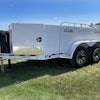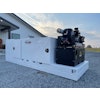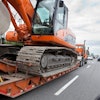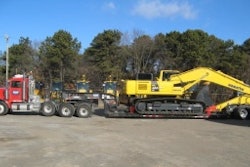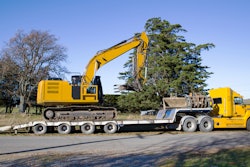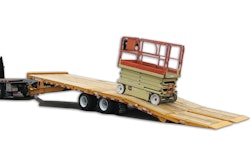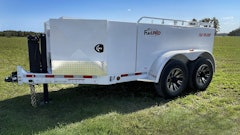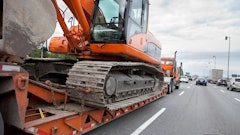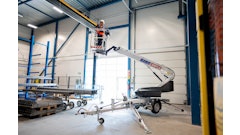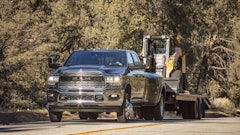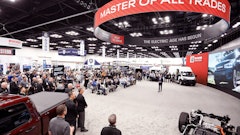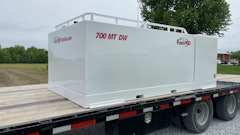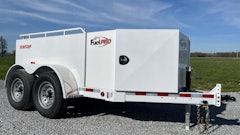
For George Harms Construction Company, a Howe, NJ-based contractor, challenging tasks are an everyday focus. From pipe work to bridges, airports to railroads and marine work to large environmental projects, Harms has realized major successes in both the public and private sectors.
The company maintains a large fleet of late-model construction equipment -- some of which is the largest, most technically advanced equipment in the world. "For that reason, we need the right trailer to transport it where we need it and when we need it," says Chris Standke, Harms equipment superintendent, and a 25+ year industry veteran.
Harms used to haul cranes, drill rigs and large excavators on a four-axle trailer. However, New Jersey is changing its weight laws from to 30,000 lbs. per axle down to 22,400 lbs. "With the new regulations, we need a lot more axles," says Standke.
"Talbert Mfg. and its dealer, Hale Trailer Brake & Wheel, worked closely with us to design and customize a trailer that would meet our needs," says Standke. "Over a several month period, they collected complete data on loads and weight distribution, so that they could specify a trailer that would give us the most flexibility and versatility."
Ultimately, Harms purchased a customized 65-ton spread axle trailer with the first Equalizer to be applied in a two-axle configuration. The Equalizer is a nitrogen-assisted dampening system that hydraulically transfers loads in all terrains. The suspension system oscillates around a central self-tracking pivot point to provide proportionate weight distribution in each axle grouping, regardless of varying road conditions. By hydraulically dampening axle movement and controlling load transfer, the suspension system absorbs hauling and loading shocks, while providing a greater range of suspension movement for reduced stress and a smoother ride.
The rest of the unit consists of a three-axle trailer, and a three-axle jeep dolly. The jeep dolly is placed between the truck and the trailer to help split the load so the truck doesn't take the entire load on the front end. The Equalizer helps to pick up the weight on the back end, splitting the weight between the three axles on the trailer and the two axles on the Equalizer.
"Particularly due to the changing permit laws, this is a trailer that we need now for many loads, but will even need much more in the future," Standke states. "Its biggest advantage is that you can change the configurations. We're not stuck with a standard 3+3+2 trailer. Instead, we can take axles on and off. It can be a 12-axle, a 11-axle, a 10-axle -- however you want to put it together."
Talbert also customized the length and the capacity of the beam. "Talbert doesn't deliver a stock trailer from their yard. They engineered our unit to fit certain machines that we own," Standke says, who operates at least 10 other Talbert trailers.
"Today's projects are more complicated, especially with changing regulations. It is an advantage when manufacturers introduce technologies that make it easier to do our job," says Standke.

